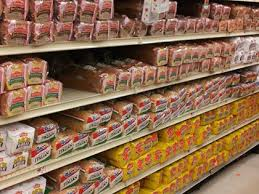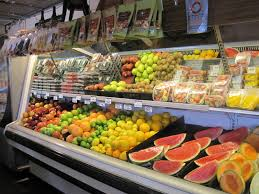CNPP Journaling (Revised)
Generic Clearance to Conduct Formative Research/CNPP
Attachment F 1 Moderator Guide Focus Groups - English 6 5 15
CNPP Journaling (Revised)
OMB: 0584-0523
OMB CONTROL NO.: 0584-0523
EXPIRATION DATE: XX/XX/20XX
OMB BURDEN STATEMENT: According to the Paperwork Reduction Act of 1995, no persons are required to respond to a collection of information unless it displays a valid OMB control number. The valid OMB control number for this information collection is 0584-0523. The time to complete this information collection is estimated at 90 minutes including the time for reviewing instructions and completing the information.
APPENDIX F-1: CNPP Focus Group Moderator’s Guide – English
CNPP Focus Group Activity Moderator’s Guide - English
Introduction (5 minutes]
Moderator introduces him/her self
No cell phones
Refreshments
Bathrooms
Rules for participation (raise hand, no interruption, all opinion count, no right or wrong answers)
Image Exploration-Metaphor Elicitation (35 minutes)
Personal priorities - At this point in your life, what are the 3 things that are most important to you? Take a minute to write these things down. (Moderator: try to draw people out. Probe on what is important to them and why, only if necessary)
When did these things become important to you? In other words, have they always been this important?
How much are you able to focus on these things that are important to you? As much as you would like?
[IF NO:] What gets in the way? What gets your focus instead? How does that make you feel?
Let’s talk about your homework assignment (see Focus Group screener (Appendix E) for pre-work instructions). Everyone has a little different approach. Start by telling me how you understood the assignment and how you went about gathering pictures.
Did the pre-work prompt any new thinking about “living a healthy life”?
How many pictures did you bring? (INSTRUCTIONS WERE 7-10)
Take a minute and choose 2 or 3 for us to talk about. We’ll go through more if we have time, but let’s start with 2 to 3. Try to pick ones that say different things about how you feel about living a healthy life so we get a good variety of thoughts and feelings to talk about. Lay them out in front of you.
IMAGE EXPLORATION (Round robin)
HOLD PICTURE SELECTED FROM PRE-WORK SO THOSE IN BACK ROOM CAN SEE: First, tell me about one of your pictures—describe it to me (probe on who, what, when, where, why).
What is the story that you see in this picture? Describe it to me as you would a story (or movie/book).
What does this picture mean to you? What is the feeling or idea it conveys for you?
How does this picture express your thoughts and feelings about living a healthy life?
Tell me everything you can about what triggers this feeling about living a healthy life?
What information or experiences have you had that make you feel that way?
Did you have that feeling or idea in mind and then go look for a picture… or did you find this picture and it seemed right for living a healthy life?
EMOTIONAL CONNECTION:
What makes that feeling/idea important to you?
What does that feeling/idea do for you, personally?
What effect does this feeling/idea have on you?
What’s good about this feeling or idea?
Is there anything bad about this feeling or idea? What gets in the way of living a healthy life?
How is life better with this feeling or idea? For you? For others?
How is the community better because of it?
WHEN DOES THE FEELING OCCUR:
What does it take for that feeling/idea to happen? What events, actions or people?
How does that happen?
What are other times when you have this feeling/idea?
EXPAND THE FRAME: Imagine that we can pull back and see what’s outside the picture. What or who would you expect to see?
If we could add to the picture, does that say more about your feeling or ideas related to being health/living a healthy life?
If you were to place yourself in the picture, where would you be? What would you be doing?
What is a descriptive word or two – a title for this picture that would capture the meaning or theme of it? (LABEL W/ POST IT NOTES)
(Ask others in room) Did anyone else have a similar picture or idea? Hold it up for me (and probe).
AFTER ALL SHARE:
[Pictures respondents discussed will be spread out on the table. Have respondents look at all of the pictures one more time – they can walk around the room. Then ask the following.]
Let’s think about all of the descriptions that people provided. What are your impressions? [PROBE: Wide variety of items vs. similar responses]
Now, looking at the pictures, what are some things that go together?
What does that say to us about how we think about living a healthy life?
Do we see any themes, ideas or values that we share?
Now, what are some things that seem to be different from one another?
What does it say about living a healthy life? About our views and experiences?
Where do these associations come from? Where did you learn about what’s healthy/unhealthy?
Who has been an influence in your life – in ways you think about health? (Positive & negative)
When have you had an “aha” moment or turning point in thinking about your health and healthy living?
Food decision making and patterns (40 minutes)
A. [Half
of the groups will discuss food they recently gave up or started
eating less of, and the other half will discuss food they recently
started eating or started eating more of. Directions
for Moderator:
Have respondents write down a food that they recently started eating
more of or one food they stopped eating or stared eating less of,
this will depend on the group] (15 minutes)
[Questions for the group that recently started eating more of a food]
What were some of the factors that influenced your decision to start eating or eat more of this food? [Probe: If specific reason is given, like health benefit, ask where they got the information, including any personal communication]
What does eating “more of this food” mean to you? For instance, does this mean you eat it more often? Larger portions?
What were your previous thoughts or feeling about this food, before you started eating more of it/start eating it?
Did you decide to eat this food instead of something else? What made you make that decision? Are there tradeoffs? (Probe: cost, taste, health)
Do you feel that there are any challenges in continuing to eat more of this food?
How do those close to you feel about it? How did those close to you respond when you started eating more of this food? How did those close to you help or hurt your attempt to continue eating this food?
What, if anything, is different as a result of your eating more of this food?
How do you know?
Does that matter?
[Questions for the group about food they stopped eating or eating less of] Can you tell us about the food you recently stopped eating or eating less off?]
Why did you stop eating it or start eating less of it? [Probe: is this something you do not prefer anymore? Were there other reasons? Health concerns? If specific reasons are given, ask where they got the information]
What does eating “less of this food” mean to you? For instance, does this mean you eat it less often? Smaller portions?
What was the most difficult thing about stopping or eating less of this food?
Do you miss it? Why or why not? If yes, how do fight the urge to eat that food? How do you feel about fighting this urge?
Are there situations or memories that remind you of it? How are you able to maintain not eating this food/eating less of this food?
How do those close to you feel about it? How did those close to you respond when you stopped eating this food/ate less of this food? How did those close to you help or hurt your attempt to stop eating/eat less of this food?
What, if anything, is different as a result of your eating less of this food?
How do you know?
Does that matter?
Let’s switch gears for a moment and discuss shopping for food for your family. We can talk about buying food at a grocery store, a convenience store, or any place you purchase food items. What is your typical approach to food shopping? Feel free to share the process leading up to the store, or your overall approach once you are in the store (20 minutes)
[Suggested probes]
Do you tend to shop at just one store, or multiple stores? Why?
Do you usually take multiple, small trips to the store, or do you wait until you need several items (i.e., fill up the cart)?
Tell us about the process that leads up to your trip to the store (probe: do you have meals in mind? How long of a time period are you trying to cover?)
Do you typically make a list before you go food shopping? (probe for how they make their list, process)
Think about when you are typically in the store, what is on your mind? [PROBE: nutrition-related thoughts, cost concerns, “everyday life” thoughts, etc.]
[Aided exercise displaying grocery store shelves for two of the following food categories/DG-related issues: bread aisle (whole grains), dairy case, and a selection of fruit and vegetables, not all need to be fresh (a composite of fresh, frozen and canned). Rotate food groups across groups, each group will see only two food categories] Now we are going to take a virtual shopping trip. Take a look at the sheet in front of you that contains pictures of a grocery aisle (see sheets at end of document).
First, how do you typically approach this section of the store?
What do you look for? What makes you say that? [PROBE: Brand, price, preparation, who in your family typically eats it, nutrition element]
To what extent, if at all, do you vary your selections here?
With your red pen, circle some items you know you would never buy. [Pause for a few moments to allow participants time to navigate the handout]. What was your criteria in deciding that these are not products you would want to buy?
With your blue pen, circle the items that you might be making a decision between. [Pause for a few moments] Now that you’ve narrowed down your choice to a smaller selection on the shelf, how do you make the final decision about what goes into your cart?
Bringing us back to thinking about the store as a whole, can you describe an experience of just grabbing something that you do not normally purchase?
What it that product?
What was going through your mind when that happened?
What attracted you to that product at that moment?
Let’s imagine you put something back, why would you? What would be some of the reasons?
Wrap up (10 minutes)
We started our discussion thinking about priorities and how you view a healthy life. Then, we started to talk about specific times in which we make choices about the foods we eat. Now, let’s combine the two.
When making food choices, whether it is at a meal or when shopping for food, how much, if at all, do you think about “living a healthy life”? Why do you think that is the case?
(Moderator, assure if necessary that It is fine if does not fit well, but probe the reasons for disconnect)
How well do you think your typical food choices match back to your priorities that we discussed earlier this evening? What makes you say that?
How does that make you feel?
Before we close, I am going to go to the back room to see if anyone has any additional questions to ask. In the meantime, please take a moment and answer the question on Handout 1: What are some things you think you can do to help you keep in mind your overall priorities when making decisions about the foods you eat? (Make sure respondents understand the question before heading to the back room)
Examples of Images for Virtual Shopping Trip Exercise






Handout 1
Please answer the question, below. Be as specific as possible.
What are some things you think you can do to help you keep in mind your overall priorities when making decisions about the foods you eat?
___________________________________________________________________________
___________________________________________________________________________
___________________________________________________________________________
___________________________________________________________________________
___________________________________________________________________________
___________________________________________________________________________
| File Type | application/vnd.openxmlformats-officedocument.wordprocessingml.document |
| Author | Alec Ulasevich |
| File Modified | 0000-00-00 |
| File Created | 2021-01-31 |
© 2025 OMB.report | Privacy Policy